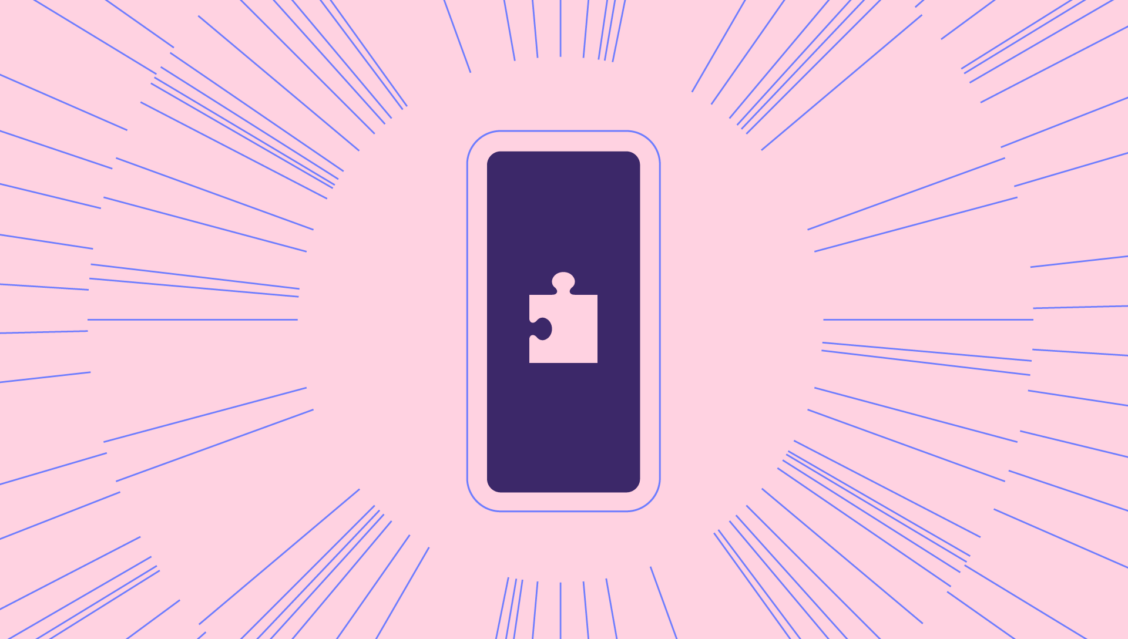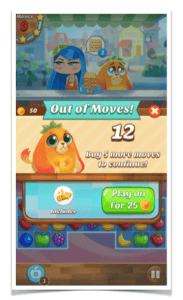
The 6 Rules of a Hit Puzzle Game
Ever since Tetris, puzzle games have been the most played games on handheld devices and computers. But it has been the App Store that has popularized puzzle games beyond what seemed to be possible and created a gold rush for the genre.
At a glance puzzle games feel very simple. Match three, shoot a bubble or draw a line and you’ll be showered with candy-like visual feedback. But with something so simple yet so highly engaging and entertaining there’s more than meets the eye.
In my mind there are six key elements that are essential for any casual puzzle game to succeed. Nonetheless, covering all six elements doesn’t guarantee success, since failing at even one of them will prevent the game from reaching the top.
Rule 1: New Puzzle Mechanics
The first rule shouldn’t surprise anyone: you can’t hit a homerun without offering players something new. You need a truly unique puzzle mechanic that is fun to play – over and over again. Creating a new yet familiar mechanic is a tough challenge that gets tougher every time a new successful puzzle game is released. My personal opinion is that the goal is not necessarily to come up with something totally new; in fact a viable option is to take a complex puzzle mechanic and make it more simple or to take a familiar mechanic and innovate around powerful visual feedback.
Rule 2: Turn-based Gameplay
One key element for the tremendous success of puzzle games on mobile is that they can be played practically anywhere, anytime. They don’t demand uninterrupted sessions or precise controls because the action is turn-based. Turn-based gameplay simply makes puzzle games perfect for killing time.

Timer based level design has had less success on mobile compared to turn-based level design.
I believe that turn-based gameplay, as opposed to timer-based gameplay, is key for any casual mobile game and the challenges of PopCap are a great example of not following this rule. While games like Bejeweled Blitz and Plants vs. Zombies were first movers on mobile they were never able to capture the same popularity as other turn-based games.
Rule 3: Energy Mechanic
It’s no surprise that we, the players, don’t like energy mechanics. It cuts off sessions, forces us to spend money to continue playing, or even worse, asks us to spam our Facebook friends for energy.
Energy may feel like a negative mechanic but it actually increases player engagement and creates a need for active network of playing friends.
Yet without an energy mechanic, puzzle games bear a risk of becoming boring, or even worse – quickly running out of content:
Without energy there would be no incentive to attempt to finish a level. For example Angry Birds doesn’t have energy (apart from later iteration). So if a player misses her first or second throw; she doesn’t try to finish the level by slinging the other birds. Instead the player simply restarts the level. Secondly, without an energy mechanic, there’s no natural end for a session. If there were no energy mechanic, a player would continue attempting (and failing) a level forever and ever, eventually just hating the game. Instead, the energy mechanic distributes failure. You fail only five times to cool down for a few hours while your energy reloads, and you come back with five more attempts.
Thirdly, energy mechanics increase the stakes of every attempt – fail and you’ll lose energy, win and keep playing.
Energy is also an important retention mechanic as it pushes players away from the game only to get them back in an hour or so after the energy has been refilled.
Finally, an energy mechanic slows down player progress by limiting the amount of games per day. Slowing down progress is extremely important because without it, you’ll work a month on 20 levels only to see your engaged players breeze through them in a day by playing non-stop. Trust me, I’ve been in that content treadmill a few times too many…
Rule 4: Social Map
Playing a game with real people, preferably with one’s friends, is simply essential for retention and monetization. A social level-based map shows a player’s progress in comparison to their friends and gives that nice feeling of not being alone in the game. What’s best about a social map is that it doesn’t matter if a player’s friends haven’t played in ages, as they’ll still see them on the map. A social map is also an important piece of monetization because monetization is driven by competition. It’s not about being the best version of you. It’s about being better than who you’re compared to.

The social map in Seriously’s Best Fiends is probably the best one I’ve seen. It’s not only appealing and fun to interact with, but also offers clear visual progress through the landscape changes.
Rule 5: Pay-to-Continue
Just like in good old arcades, pay-to-continue is the main source of monetization in puzzle games simply because the levels are designed for players to fail multiple times. And this mechanic works. You’re about to beat a level that you’ve been trying to pass for a week now and you fall a move short. Want to pay a small sum to for a few extra turns to beat the level? I thought so. We’re seeing mobile video ads come into play here as well, giving users an opportunity to process in the game by watching a quick ad.

Pay-to-Continue is the key monetization mechanic is puzzle games. It also emphasizes the role of turn-based level design.
The pay-to-continue mechanic is also supercharged through the social map that compares a players’ progress to that of their friends. In a situation where you know, based on the map, that your friend has beaten the level you’re stuck on, spending a coin or two on beating a level doesn’t sound like a bad idea.
Rule 6: Wait-or-Pay Gates
In a puzzle game, a player’s progress is typically halted with a gate after a specific amount of levels. There are three ways to pass the gate. The first one is simply to wait it out, which means not playing for a couple of days. The second option is to open the gate by spending premium currency/real money. And the third option is to replay levels to earn enough stars to unlock the gate.
These hard stops are solid monetization mechanics though the overall revenue from them is generally limited. The limit in revenue is due to simple math; there are only a set amount of these gates that developers can monetize through compared to the large number of levels that all incentivize players to pay-to-continue. But even though the revenue share from gates is small, this mechanic is great in driving conversion. Halting a player’s progress with a gate once she is engaged prompts her to make that important first purchase.
The Hidden Elements of Success
To summarize: a new and fun mechanic, a social map, an energy mechanic, turn-based gameplay, arcade like pay-to-continue mechanics and progress gates are prerequisites for a hit puzzle game. Yet as we all know, crossing off feature prerequisites is never enough for a top ten hit title.